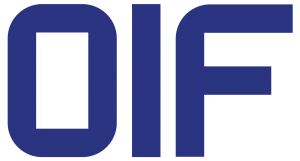OIF Concludes Successful Q3 ‘24 Technical and MA&E Committees Meeting with Launch of Three New Projects to Advance Networking Technologies
Fremont, Calif. – OIF successfully concluded its Q3 ‘24 Technical and MA&E Committees Meeting, held from Aug. 6-8, 2024, in Ottawa, ON, Canada.
During the meeting, OIF members initiated three new projects: Energy Efficient Interfaces (EEI) Compute Optics Interface (COI) for Artificial Intelligence (AI) Scale-up, EEI-224G-RTLR, and Common Electrical I/O (CEI)-448G Framework. The meeting also included Physical & Link Layer Working Group Interim Meetings on Aug. 5, 2024.
“Our in-person meetings provide a critical platform for collaboration and progress, allowing us to push the boundaries of innovation and address the evolving needs of the networking and AI/Machine Learning (ML) industries,” said Karl Bois, OIF Technical Committee Chair and NVIDIA.
NEW PROJECTS:
EEI COI Project for AI Scale-up: Aimed at addressing the growing demands of AI and ML, this project will focus on developing high-efficiency, low-latency interfaces to support the next generation of AI hardware.
The EEI COI Project will focus on developing energy-efficient, low-latency photonic interfaces to support AI scale-up links such as PCIe, NVLink and UALink. As AI workloads grow, the need for standardized, interoperable solutions for local accelerator connectivity becomes critical. Building on the existing EEI work, this project aims to address the industry’s demand for scalable, high-performance compute optical interfaces that ensure interoperability across diverse AI platforms.
EEI-224G-RTLR Project: This project will concentrate on enhancing electrical interfaces to enable lower power 224G optical signaling, a critical component in the evolution of high-speed data transmission and the expansion of broadband infrastructure.
The EEI-224G-RTLR Project aims to develop an Implementation Agreement (IA) for 224G Retimed Tx Linear Rx (RTLR) optical interfaces, following the decision to split the 224G RTLR work into a dedicated project. RTLR offers significant potential for cost, power and latency savings—approximately half of what is achievable with fully retimed pluggable optics—by eliminating the need for Rx DSP. Unlike Linear Pluggable Optics (LPO), where optical and copper links are mutually constrained, RTLR enables true plug and play interoperability.
This project is critical to ensuring interoperable interfaces with reduced power and higher efficiency in next-generation data and communication systems.
CEI-448G Framework Project: The CEI-448G Framework Project will develop a comprehensive framework for 448G electrical interfaces, enabling higher data rates and improved performance in data center and telecommunications applications.
The CEI-448G Framework Project is focused on defining the next electrical data rate beyond 224Gbps, targeting 448Gbps. As industry discussions begin, this project aims to address the challenges of achieving this high-speed data rate by exploring key factors like interface support, modulation schemes and test methodologies.
By gathering input from end-users, equipment developers and industry experts, the project will create a comprehensive body of knowledge. The findings will be summarized in a technical white paper, laying the groundwork for future projects that will develop specific standards and architectures for 448Gbps data rates.
Looking ahead, OIF’s Q4 ‘24 Technical and MA&E Committees Meeting will be held the week of November 4-8, 2024, in Melbourne, Australia. This members-only meeting will provide a platform for further collaboration and progress on ongoing and new projects.
For more information about OIF’s initiatives, upcoming events or how to become a member, please visit https://www.oiforum.com.
About OIF
OIF is where the optical networking industry’s interoperability work gets done. With more than 25 years of effecting forward change in the industry, OIF represents the dynamic ecosystem of 150+ industry leading network operators, system vendors, component vendors and test equipment vendors collaborating to develop interoperable electrical, optical and control solutions that directly impact the industry’s ecosystem and facilitate global connectivity in the open network world. Connect with OIF on LinkedIn, on X at @OIForum and at http://www.oiforum.com.
PR Contact:
Leah Wilkinson
Wilkinson + Associates for OIF
leah@wilkinson.associates
703-907-0010

